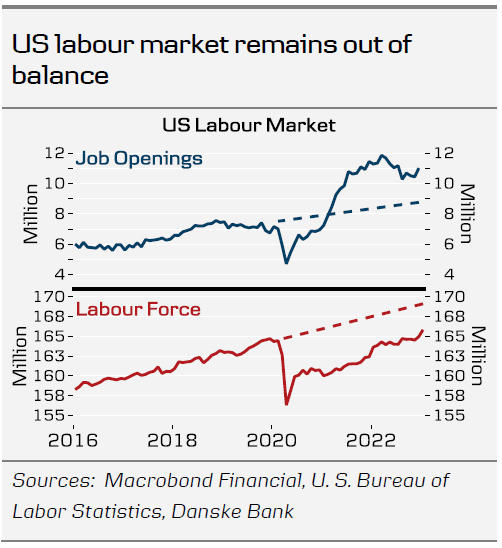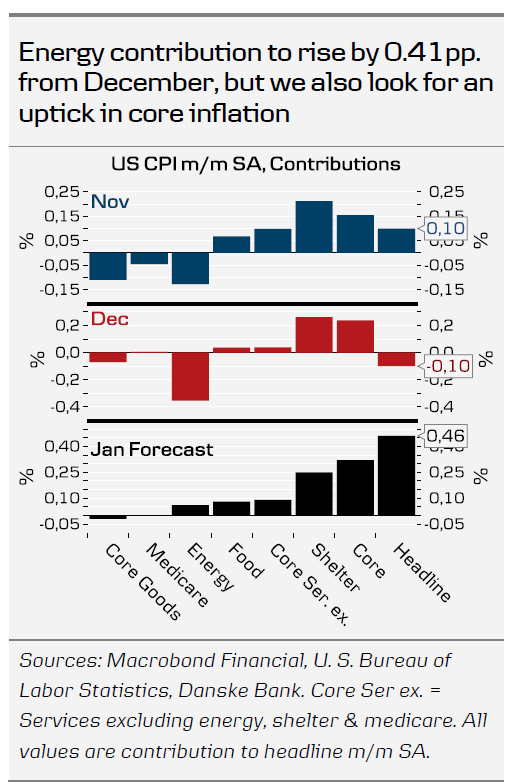US – Soft landing to no landing?
- From soft landing to no landing? The turnaround in macro momentum could prolong the need for tight monetary policy as labour markets remain too hot.
- January core CPI above 0.4% m/m would mark a clear pick-up in underlying inflation pressures and could take EUR/USD another leg lower.
- We think Fed is unlikely to revert back to 50bp hikes, but we remain open for the hiking cycle extending into the summer and/or rates remaining higher for longer.
At the beginning of the year we warned that the pre-emptive easing in financial conditions could lead to a pick-up in economic activity before the labour market has cooled sufficiently (see Research US – Good news is bad news for the Fed, 4 January). In our view, the January global PMIs as well as the US ISM and NFP data support the case.
That said, the 517k employment growth in January could overstate the true strength of the Jobs Report. The January figures are always subject to heavy seasonal adjustments due to the end of the holiday working season. It was the 6th warmest January on record since 1900, which likely supported employment in weather-sensitive sectors like construction. The non-seasonally adjusted employment declined by 2.5M, which is 358k less than during an average January over the past decade. The high SA figure could be partially explained by the adjustment factor failing to fully take into account the warm weather.
The blurry seasonality does not take away from the fact that labour markets remain extremely tight. Fed has assumed that the gradual slowdown of the economy would also cool the employment situation, but the tide could turn too early. The high number of job openings points towards still elevated labour demand, and the persistent divergence in the establishment survey (counting jobs) and the much weaker household survey (counting workers) suggests that labour supply remains scarce. While growth in both the employment cost index and the Indeed Hiring Lab’s wage tracker based on job postings cooled towards the end of 2022, both figures remain too high to be consistent with Fed’s inflation target.
As Fed emphasizes data dependency, markets’ focus has shifted towards macro data releases, and not least the January CPI. The uptick in ISM services, household savings rate and used car prices suggest that both general activity and firms’ pricing power have remained healthy at the beginning of the year. We forecast core CPI at 0.4% m/m, which is on the upper end of consensus forecasts. An upside surprise to 0.5% or above would in our view mark a clear upturn in the broader underlying inflation pressures.
Following the recent data, markets are now aligned with our call of a terminal rate of 5.00-5.25% in May. FOMC members have made it clear that move back to 50bp hikes is unlikely, but further upside surprises in data could push markets towards pricing rate hikes also for June and July. Fed focuses on real rates, and both consumer and market-based inflation expectations will be key to follow. While base effects will ensure that CPI figures come down this year, 1y1y inflation swap forwards have edged higher over the past weeks. Higher inflation expectations would warrant higher nominal rates for longer – for now we stick to our forecast of first cuts only in early 2024.














